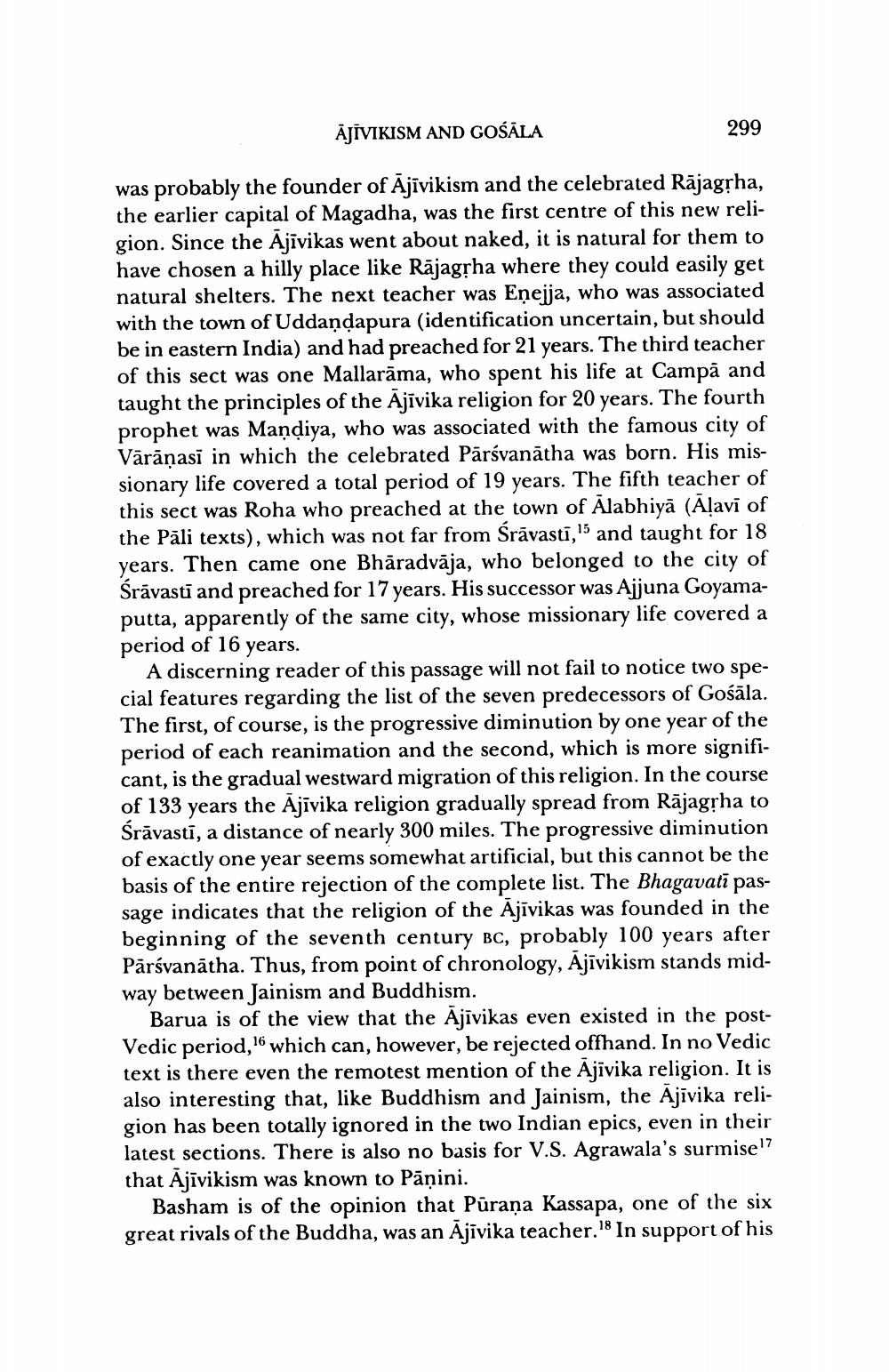________________
ĀJĪVIKISM AND GOŚĀLA
299
was probably the founder of Ajīvikism and the celebrated Rājagļha, the earlier capital of Magadha, was the first centre of this new religion. Since the Ajīvikas went about naked, it is natural for them to have chosen a hilly place like Rājagļha where they could easily get natural shelters. The next teacher was Eņejja, who was associated with the town of Uddandapura (identification uncertain, but should be in eastern India) and had preached for 21 years. The third teacher of this sect was one Mallarāma, who spent his life at Campā and taught the principles of the Ajīvika religion for 20 years. The fourth prophet was Mandiya, who was associated with the famous city of Vārāṇasi in which the celebrated Pārsvanātha was born. His missionary life covered a total period of 19 years. The fifth teacher of this sect was Roha who preached at the town of Alabhiyā (Āļavi of the Pāli texts), which was not far from Srāvasti,'' and taught for 18 years. Then came one Bhāradvāja, who belonged to the city of Śrāvastī and preached for 17 years. His successor was Ajjuna Goyamaputta, apparently of the same city, whose missionary life covered a period of 16 years.
A discerning reader of this passage will not fail to notice two special features regarding the list of the seven predecessors of Gośāla. The first, of course, is the progressive diminution by one year of the period of each reanimation and the second, which is more significant, is the gradual westward migration of this religion. In the course of 133 years the Ajīvika religion gradually spread from Rājagrha to Śravasti, a distance of nearly 300 miles. The progressive diminut of exactly one year seems somewhat artificial, but this cannot be the basis of the entire rejection of the complete list. The Bhagavatī passage indicates that the religion of the Ajīvikas was founded in the beginning of the seventh century BC, probably 100 years after Pārsvanātha. Thus, from point of chronology, Ajīvikism stands midway between Jainism and Buddhism.
Barua is of the view that the Ajivikas even existed in the postVedic period, 16 which can, however, be rejected offhand. In no Vedic text is there even the remotest mention of the Ajīvika religion. It is also interesting that, like Buddhism and Jainism, the Ajīvika religion has been totally ignored in the two Indian epics, even in their latest sections. There is also no basis for V.S. Agrawala's surmise! that Ajīvikism was known to Pāņini.
Basham is of the opinion that Purana Kassapa, one of the six great rivals of the Buddha, was an Ajivika teacher. 18 In support of his




